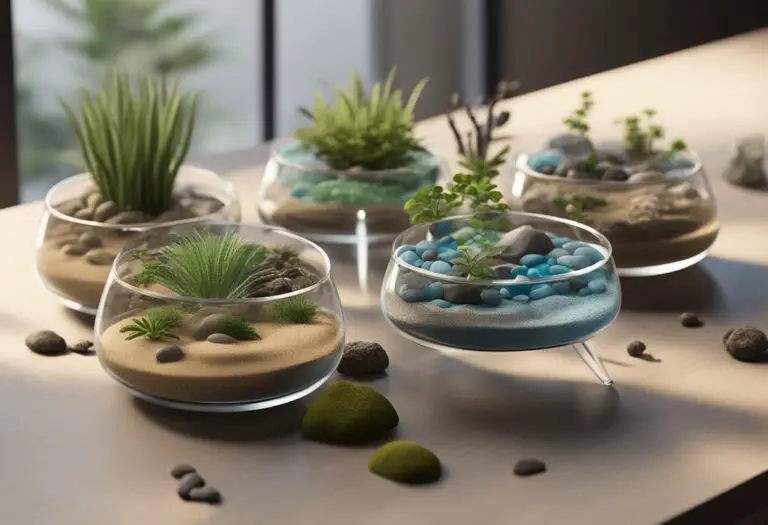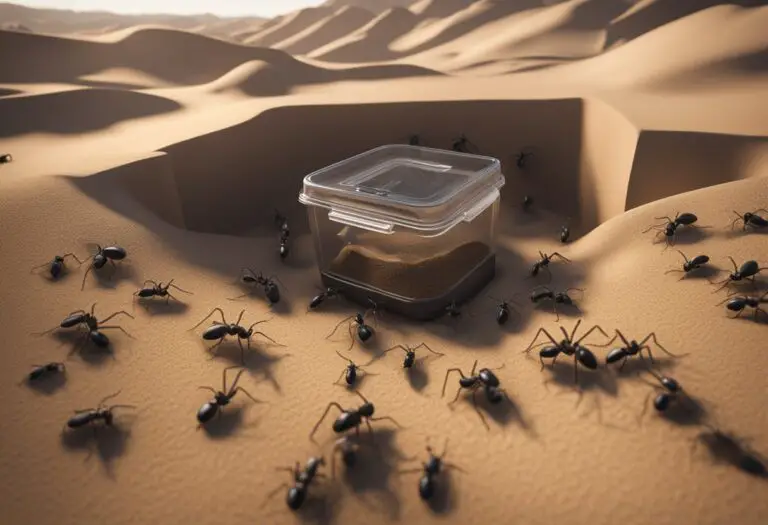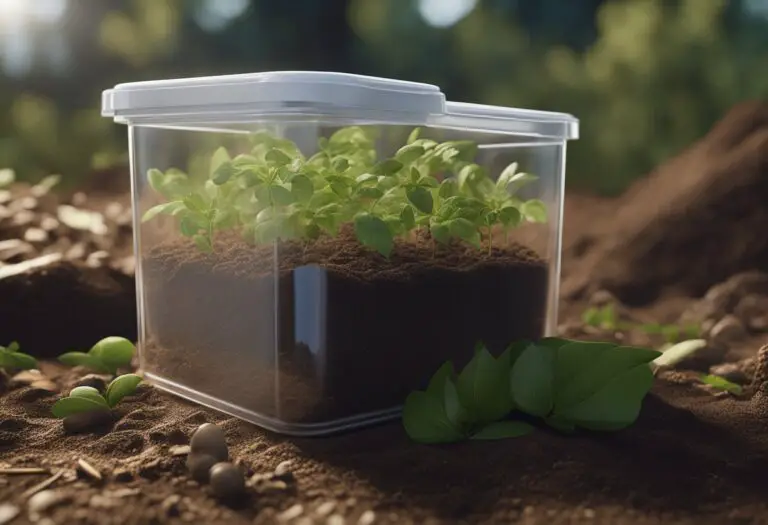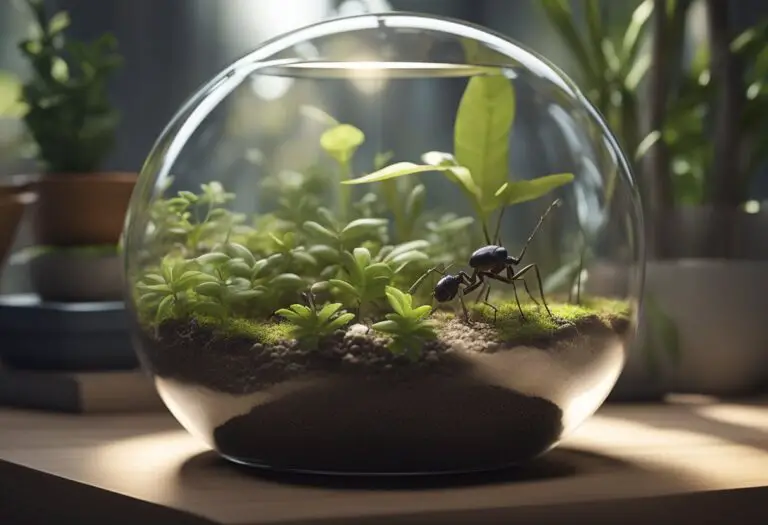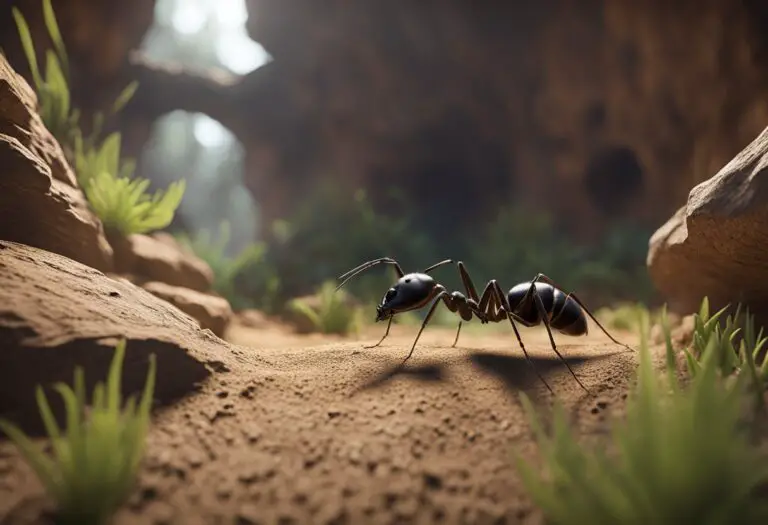When to Change the Substrate in an Ant Habitat? A Guide for Ant Keepers
Ant keeping is a fascinating hobby that has gained popularity in recent years. One of the essential aspects of ant keeping is maintaining the ant habitat, which includes changing the substrate. Substrate is the material used to line the bottom of the ant habitat, and it plays a vital role in the health and well-being of the ant colony.
Knowing when to change the substrate in an ant habitat is crucial for the survival of the ants. The substrate provides the ants with a place to nest, forage, and store food. Over time, the substrate can become contaminated with waste, dead ants, and leftover food, making it unsuitable for the ants to live in. Changing the substrate regularly ensures that the ants have a clean and healthy environment to live in, which can help prevent diseases and infections.
However, changing the substrate too often can also be detrimental to the ant colony. Ants rely on their sense of smell to navigate their environment, and changing the substrate too frequently can disrupt their pheromone trails, causing confusion and stress. Therefore, it is essential to strike a balance between maintaining a clean habitat and not disturbing the ants’ natural behavior.
Understanding Ant Habitat Substrate

Ants are fascinating creatures that require a suitable habitat to thrive. One of the critical components of an ant habitat is the substrate. Substrate refers to the material that lines the bottom of the ant habitat. It plays a crucial role in maintaining the health and well-being of the ants.
Importance of Substrate
The substrate in an ant habitat is essential for several reasons. Firstly, it provides a surface for the ants to walk on, which is necessary for their movement and exploration. Secondly, it helps to regulate the humidity in the ant habitat. The right amount of moisture is necessary for the ants to thrive, and the substrate plays a significant role in maintaining the humidity levels. Lastly, the substrate provides a suitable environment for the growth of microorganisms, which are an essential food source for the ants.
Types of Substrate
There are various types of substrates that are suitable for ant habitats. The most common types include sand, soil, and a mixture of sand and soil. Sand is an excellent substrate as it provides a solid surface for the ants to walk on and is easy to clean. Soil, on the other hand, is an excellent substrate for maintaining humidity levels in the ant habitat. A mixture of sand and soil provides the benefits of both substrates.
It is essential to choose the right substrate for your ant habitat. The type of substrate you choose will depend on the species of ants you have and their specific requirements. It is crucial to research the species of ants you have and their natural habitat to determine the best substrate for them.
In conclusion, the substrate is a critical component of an ant habitat. It provides a surface for the ants to walk on, regulates humidity levels, and provides a suitable environment for the growth of microorganisms. Choosing the right substrate for your ant habitat is essential for the health and well-being of your ants.
Signs It’s Time to Change the Substrate

Ants are fascinating creatures to observe, but their habitats require regular maintenance to ensure their health and well-being. One crucial aspect of ant habitat maintenance is changing the substrate. The substrate is the material that lines the bottom of the ant habitat, and it is where the ants live, eat, and deposit their waste. Here are some signs that it’s time to change the substrate in an ant habitat:
Visible Waste Accumulation
One of the most apparent signs that it’s time to change the substrate is visible waste accumulation. As ants eat, they produce waste, and over time, this waste can build up in the substrate. If you notice a significant amount of waste in the habitat, it’s time to change the substrate. Accumulated waste can lead to the growth of harmful bacteria and parasites, which can be detrimental to the ants’ health.
Fungal Growth
Another sign that it’s time to change the substrate is the growth of fungi. Fungi thrive in warm, moist environments, and ant habitats provide the perfect conditions for their growth. If you notice any fungal growth in the substrate, it’s time to change it. Fungi can be harmful to ants, and some species can even be toxic.
Ant Behavior Indicators
Ant behavior can also indicate when it’s time to change the substrate. If you notice that the ants are avoiding certain areas of the habitat or are spending more time on the surface, it could be a sign that the substrate needs changing. Ants are sensitive to changes in their environment, and if the substrate is no longer suitable for them, they will adjust their behavior accordingly.
Regularly changing the substrate in an ant habitat is essential for the health and well-being of the ants. By keeping an eye out for visible waste accumulation, fungal growth, and changes in ant behavior, you can ensure that your ant colony thrives in a clean and healthy environment.
Frequency of Substrate Change

Ant habitats require regular maintenance to ensure the health and well-being of the colony. One important aspect of maintenance is changing the substrate. The frequency of substrate change can vary depending on several factors, including the species of ant and the size of the habitat.
Species-Specific Guidelines
Different species of ants have different substrate requirements. Some species prefer dry substrate, while others require moist substrate. It is important to research the specific needs of the ant species in your habitat to determine the appropriate frequency of substrate change.
For example, species that require moist substrate, such as leafcutter ants, may need substrate changes more frequently to prevent mold growth and maintain proper humidity levels. On the other hand, species that prefer dry substrate, such as harvester ants, may require less frequent substrate changes.
Impact of Habitat Size
The size of the habitat also plays a role in determining the frequency of substrate change. Larger habitats may require less frequent substrate changes, while smaller habitats may need more frequent changes.
In general, it is recommended to change the substrate in a small ant habitat every 1-2 months, while a larger habitat may only need substrate changes every 3-6 months. However, it is important to monitor the condition of the substrate and make changes as needed, rather than relying solely on a set schedule.
Regular substrate changes can help maintain a healthy and thriving ant colony. By following species-specific guidelines and considering the size of the habitat, ant keepers can ensure their colonies have the best possible living conditions.
Changing the Substrate

Ants require a clean and suitable environment to thrive. A substrate change is necessary when the existing substrate becomes contaminated or depleted of nutrients. Here’s a step-by-step guide on how to change the substrate in an ant habitat.
Preparation for Substrate Change
Before starting the substrate change, it’s essential to prepare the necessary materials. These include a container to hold the old substrate, a new substrate, a small shovel or scoop, and a misting bottle filled with water.
The ant colony should be removed from the habitat and placed in a temporary container. The temporary container should have a lid with small air holes to prevent the ants from escaping. The old substrate should be removed, and the habitat should be thoroughly cleaned and dried before adding the new substrate.
Step-by-Step Substrate Replacement
- Remove the old substrate: Use a small shovel or scoop to remove the old substrate from the habitat. Place the old substrate in a container to dispose of it later.
- Clean the habitat: Use a damp cloth to clean the habitat thoroughly. Ensure the habitat is completely dry before adding the new substrate.
- Add the new substrate: Add the new substrate to the habitat, ensuring it’s level and not too compact. The substrate should be moistened with a misting bottle filled with water.
- Return the ants: Once the new substrate is added, return the ants to the habitat. Ensure the ants are placed in a suitable location within the habitat.
Post-Change Habitat Maintenance
After the substrate change, the habitat should be monitored regularly to ensure the ants are thriving. The substrate should be kept moist but not too wet, and any uneaten food should be removed promptly. It’s also essential to keep the habitat clean to prevent the buildup of mold or bacteria.
In conclusion, changing the substrate in an ant habitat is a simple process that requires preparation, careful execution, and post-change maintenance. By following these steps, you can ensure your ants have a clean and suitable environment to thrive.
Common Mistakes to Avoid

When it comes to changing the substrate in an ant habitat, there are a few common mistakes that should be avoided. These mistakes can lead to a disrupted colony or even cause harm to the ants.
Mistake #1: Changing the Substrate Too Often
One of the most common mistakes is changing the substrate too often. While it’s important to keep the habitat clean, changing the substrate too frequently can be stressful for the ants. It’s recommended to change the substrate every 6-12 months, or when it becomes visibly dirty.
Mistake #2: Using the Wrong Type of Substrate
Using the wrong type of substrate can also be a mistake. Ants require a substrate that is able to hold moisture, but not too much as this can lead to mold growth. It’s important to research the specific needs of the ant species being kept and choose a substrate that meets those needs.
Mistake #3: Disturbing the Colony During Substrate Changes
During substrate changes, it’s important to avoid disturbing the colony as much as possible. This means avoiding sudden movements or loud noises that can cause stress to the ants. It’s also recommended to perform substrate changes during a time when the ants are less active, such as during their resting period.
By avoiding these common mistakes, ant keepers can ensure a healthy and thriving colony. Proper substrate maintenance is essential for the well-being of the ants and should not be overlooked.
Additional Tips for a Healthy Ant Habitat

Aside from changing the substrate, there are other things that ant keepers can do to maintain a healthy ant habitat. Here are some additional tips:
- Clean the habitat regularly: Ants are clean creatures, and they prefer a clean environment. Regularly cleaning the habitat can prevent the growth of harmful bacteria and fungi. Use a damp cloth to wipe down the glass or plastic walls of the habitat. Avoid using soap or any cleaning agents as they can be harmful to ants.
- Provide fresh water: Ants need access to fresh water to survive. Place a small dish of water in the habitat, and refill it regularly. Make sure the dish is shallow so that the ants don’t drown. You can also use a water feeder or cotton ball to provide water.
- Offer a variety of food: Ants need a balanced diet to stay healthy. Offer a variety of food, including protein sources like insects or boiled egg, and carbohydrates like sugar water or honey. Avoid feeding them anything that is high in fat or salt.
- Monitor the temperature: Ants are sensitive to temperature changes, and extreme temperatures can be harmful to them. Keep the habitat in a room with a stable temperature and avoid placing it in direct sunlight. Use a thermometer to monitor the temperature inside the habitat.
- Avoid disturbing the ants: Ants can become stressed if they are disturbed too often. Try to avoid moving or shaking the habitat unnecessarily. If you need to move the habitat, do it slowly and gently.
By following these additional tips, ant keepers can ensure that their ant habitat remains healthy and their ants thrive.


